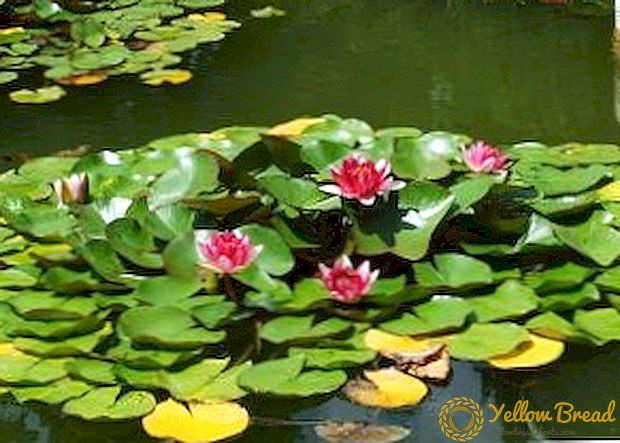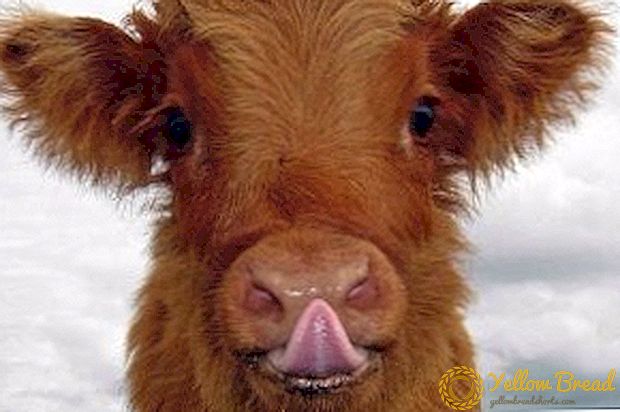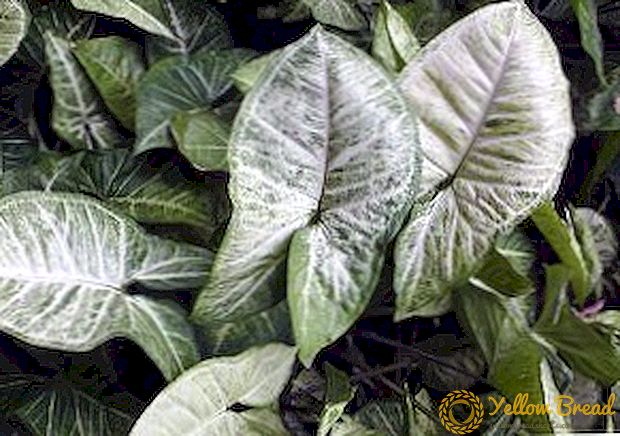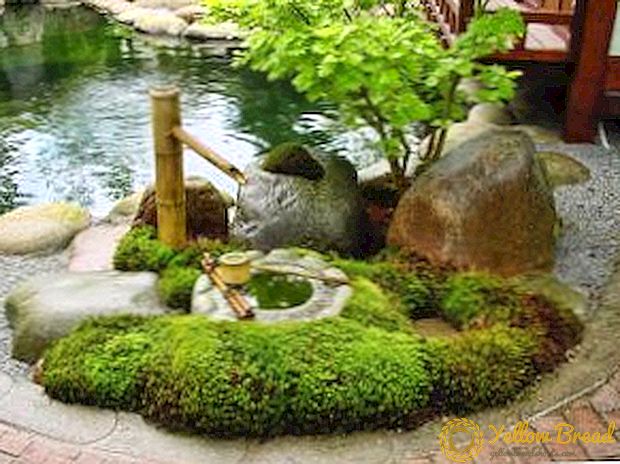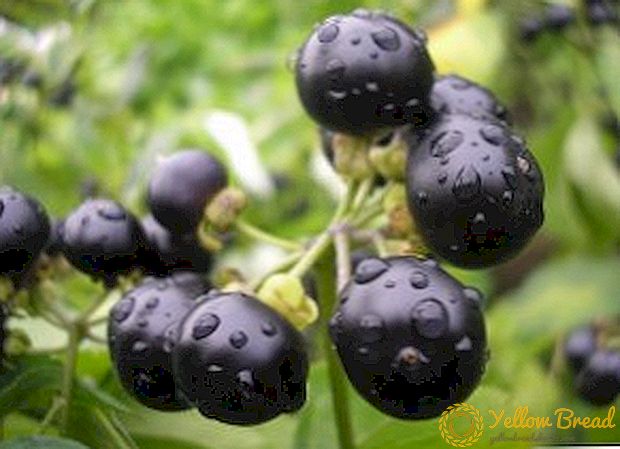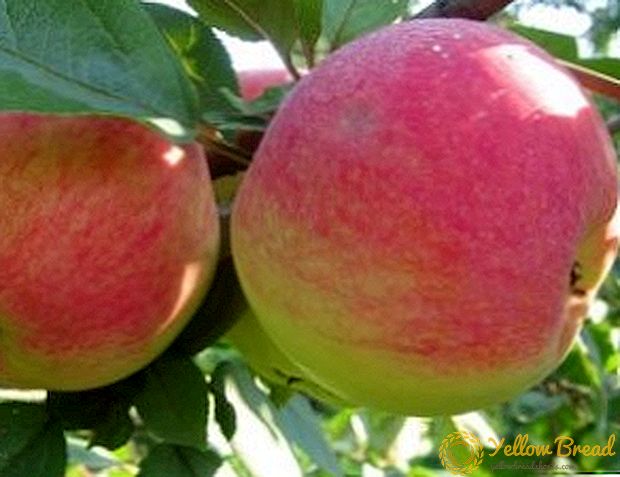 Garden blackberries - a plant very fruitful and extremely easy to clean. Even a person without any agrarian experience will cope with its cultivation. This culture is not very common today, but its popularity is increasing. Every year new varieties appear.
Garden blackberries - a plant very fruitful and extremely easy to clean. Even a person without any agrarian experience will cope with its cultivation. This culture is not very common today, but its popularity is increasing. Every year new varieties appear.
- Asterina (Asterina)
- Waldo (Waldo)
- Chief Joseph
- Guy (Gai)
- Gazda
- Loch Mary (Loch Maree)
- Loch Tay
- Karaka Black
- Quachita
- Ouchita or Waushito (Ouachita)
- Orkan
- Polar (Polar)
- Natchez (Natchez)
- Rushai (Ruczai)
- Chester (Chester Thornless)
This article will tell about the garden blackberry, and more precisely about its some of its varieties.
Asterina (Asterina)
Asterina bred in Switzerland. It prefers a hot climate. The optimal plan is to plant a 1.5 m by 2.5 m. Early harvest, may begin in June and last through September. This blackberry belongs to the new and very productive varieties. It has no spines. The bush itself is compact, powerful. Numerous branches grow vertically. The leaves are beautiful, with large teeth. Flowers are white. Berries, not even ripe, have a very sweet taste with subtle sourness. They are solid, large (minimum 7 g), black. They have a rounded or rounded elongated shape. After ripening, the fruits are not showered for a long time. This plant is very healthy, resistant to diseases and pests, but under adverse conditions (rainy summer, high humidity) it can be affected by anthracnose. 
Waldo (Waldo)
Another brandless blackberry variety. Early ripe, fructifying from June for 4-5 weeks. It has a high yield - 18-20 kg per copy. Bred in the state of Oregon by Dr. Jordam Waldo. The bush with creeping two-meter shoots has very compact dimensions, the planting scheme is 1 m × 2 m, it almost does not need pruning. Glossy, sweet and sour, very tasty, juicy berries with small seed, weigh on average 6-7 g. Have a black color, round shape, highly transportable. This blackberry variety tolerates our frosts relatively well. Waldo is the first American genetically studless variety. This trait is often transmitted to its seedlings. 
Chief Joseph
Powerful, semi-detachable shrub with a rich lateral branching.This tall blackberry grows quickly and grows up to 3-4 m and even higher. The leaves are bright green, medium size, have small, sharp teeth. Flowers are white. Shoots beshipnye numerous. It ripens in June, July and bears fruit for about one and a half months. Large fruits of 12-15 g (maximum 25 g) with sweet taste without sourness are collected in multi-brush. They are rounded elongated, black. In 3-4 years after planting, the yield will be 35 kg from one bush. Chief Joseph is drought-resistant, highly transportable. 
Guy (Gai)
Blackberry Guy is a new non-bearing variety bred in 2008 at the Brzeзa Institute (Poland). Powerful, tough, straight-growing shoots are unsuitable for bending down and need shrub shaping. Reach three meters in height. The plant has a high growth energy, does not give shoots. The leaves are dark green. Berry weighs an average of 9-11 g, black, shiny, barrel-shaped and sweet taste. The variety is characterized by high resistance to disease, transportability,yield and early ripening. Guy has excellent frost resistance and can withstand temperatures down to -30 ° C. Contained without shelter.
Gazda
This new Polish blackberry variety was registered in 2003. Suitable for mechanized picking berries. Shoots are straight, durable, covered with weak spikes in a small amount. Have high growth rates and may need support. Dark blue, medium (5-7 g) berries ripen from early August to late September. Fruits are sweet and sour, dense, round shape. The variety is also characterized by good transportability, winter hardiness and high resistance to major pests and diseases.
Loch Mary (Loch Maree)
 The compact blackberry Loch Mary is one of the latest novelties of Scottish varieties. Its semi-erect, fast-growing shoots do not have thorns. Impressive, elegant, pink, double flowers of this plant serve as an additional bait for gardeners. It has a medium term ripening.High-quality fruits of medium size (4-5, up to 10 g) have a pleasant aroma, tasty, sweet, juicy. The berries are black, glossy, rounded. Productivity and transportability are good. The plant is undemanding to agricultural technology and is able to grow in weak shading.
The compact blackberry Loch Mary is one of the latest novelties of Scottish varieties. Its semi-erect, fast-growing shoots do not have thorns. Impressive, elegant, pink, double flowers of this plant serve as an additional bait for gardeners. It has a medium term ripening.High-quality fruits of medium size (4-5, up to 10 g) have a pleasant aroma, tasty, sweet, juicy. The berries are black, glossy, rounded. Productivity and transportability are good. The plant is undemanding to agricultural technology and is able to grow in weak shading.
Loch Tay
Blackberry variety of English selection. Brought him Dr. Jennings. Unpretentious, does not need good soils, permanent, abundant watering. Drought-resistant and relatively cold-resistant. The plant is compact, shoots are half-body, gearless. Early variety, fruits from the middle - the end of July (ripening lasts about 21 days). Black, glossy, rounded fruits are located on a multi-brush. They have excellent taste. Blackberry Loch Tey has a good yield, transportability, and even in rainy summer will not be affected by gray rot.
Karaka Black
Variety bred in New Zealand. It is the result of hybridization of different types of blackberry and raspberry hybrids with blackberry. It has an average growth rate. Shoots are prickly, flexible, grow 3-5 m in length. The fruiting period lasts 6-8 weeks. Productivity is high - more than 12 kg from one plant.Fruits are large (~ 10 g), long (4-5 cm), black, glossy with a pleasant taste and aroma. A distinctive feature is the possibility of long-term storage, freezing berries. Disease resistance and transportability are also high. 
Quachita
Blackberry Quachita is a completely new variety bred by American botanist scientists (University of Arkansas). It adapts well to different growing conditions, is tough, resistant to diseases and pests. It is hot and cold-resistant (down to -26 ° C), but it is better to cover for the winter. Demanding only to the ground - better fruit on loamy, fertile soil with good drainage. It has an average ripening period - mid June-August. Very sweet berries, weighing up to 8 g, juicy with good transportability. The yield of Quachita is high - up to 30 kg from a bush. Use as fresh fruit, and after processing.
Ouchita or Waushito (Ouachita)
A new variety, also bred at the University of Arkansas. Shoots with strong vigor, bearing, powerful, direct, up to 3 m.For this compact bush, a planting pattern of 2 m × 2.5 m is suitable. It will be better to bear fruit in a sunny place with drained soil. The period of fructification falls on July-end of August. The berries are medium (5-9 g), sweet, blue-black, dense, brilliant, with a bright dessert taste, juicy, well transportable. From one bush Ouchita can collect up to 30 kg of crop. Resistant to heat and drought, and as for frost resistance, this blackberry can withstand temperatures down to -17 ° C. Keeps a trade dress about a week. 
Orkan
Another Polish variety. Bred by Jan Daneko and registered in 1998. The bush has a rapid growth rate, grows to 2.8-3 m, does not give basal shoots. Vibrant, powerful shoots - upright. It blooms in mid-May with white flowers, and ripens in late June-mid July, depending on climatic conditions. The berries are quite large - 6-8 g, black, glossy, oblong (up to 3 cm), cylindrical. The taste is sweet and sour, pleasant. Well tolerated transportation. For Orkan characteristic floral aroma. One plant gives a yield of 5 kg. In mild climates it winters without shelter, but in case of frost it is necessary. Resistance to diseases and pests is high.
Polar (Polar)
 Polar blackberry was also selected in Poland (for airless cultivation in the Polish climate). Maintains frosts up to -25 ° С and even up to -30 ° С, but at the same time the yield decreases 3-5 times. Registered in 2008. Straight, powerful, thick shoots without thorns grow up to 2.5-3 m. Growth is strong, without basal shoots. Serrated leaves have a bright green color. It blooms in early May in large, white flowers. Ripens in August-September. Berries with a rich, pleasant, sweet taste, are black and oval. The variety is high yielding. It tolerates long-term transportation, even when dropped does not deform. Suitable for industrial cultivation.
Polar blackberry was also selected in Poland (for airless cultivation in the Polish climate). Maintains frosts up to -25 ° С and even up to -30 ° С, but at the same time the yield decreases 3-5 times. Registered in 2008. Straight, powerful, thick shoots without thorns grow up to 2.5-3 m. Growth is strong, without basal shoots. Serrated leaves have a bright green color. It blooms in early May in large, white flowers. Ripens in August-September. Berries with a rich, pleasant, sweet taste, are black and oval. The variety is high yielding. It tolerates long-term transportation, even when dropped does not deform. Suitable for industrial cultivation.
Natchez (Natchez)
One of the varieties bred in Arkansas, USA (2007). Bespishny, strong-growing, with powerful, thick, long, half-upright shoots. This is an early ripe variety, ripens in early July (the term of ripening may vary, taking into account weather conditions in spring). Large berries (8-10 g), having a black color and oblong shape, do not crumble for a very long time. They are characterized by a very sweet taste (not even matured) with a cherry flavor, pleasant aroma and high yield. Fruits are able to persist chilled for a long time. Have high transportability. 
Rushai (Ruczai)
Another Polish variety. Appeared in 2009 thanks to Jan Daneko. More suitable for the garden, not commerce. This is a strong shrub with numerous shoots. Almost without root shoots. Semi-spreading thornless branches have a high growth force. Ripens in mid-late August. Beautiful purple-black berries have an elongated shape, intense shine. There are medium and large (3-5 g, up to 3 cm). Fragrant fruits contain a lot of sugar, they have a sweet taste with barely perceptible sourness. Each bush older than four years is able to produce up to 20 kg of berries, but this requires fertilizing, pruning and formation. Transportability is high. The variety is resistant to ticks and major diseases. Shelter needed for the winter.
Chester (Chester Thornless)
 Chester is an American variety from the state of Maryland. Is a hybrid varieties Tornfri and Darrow. Self-pollinating shrub, semi-wedge-shaped, with two-, three-meter branches. The spikes on the shoots are missing. Blooms in pink, large flowers. Chester bears fruit late (end of July-August) on last year's shoots.The weight of dark blue, shiny, very dense berries is 5-9 g. They are of uneven size. They are sweet with a thin sourness and a peculiar aroma. Able to withstand long shipment. The variety is high-yielding (up to 20 kg from one plant). One of the most frost-free blackberries is among those bearingless.
Chester is an American variety from the state of Maryland. Is a hybrid varieties Tornfri and Darrow. Self-pollinating shrub, semi-wedge-shaped, with two-, three-meter branches. The spikes on the shoots are missing. Blooms in pink, large flowers. Chester bears fruit late (end of July-August) on last year's shoots.The weight of dark blue, shiny, very dense berries is 5-9 g. They are of uneven size. They are sweet with a thin sourness and a peculiar aroma. Able to withstand long shipment. The variety is high-yielding (up to 20 kg from one plant). One of the most frost-free blackberries is among those bearingless.
There are a great many varieties, and it is impossible to tell about all. But, we hope that you will find the right one for you, and the information provided will help you in choosing.

